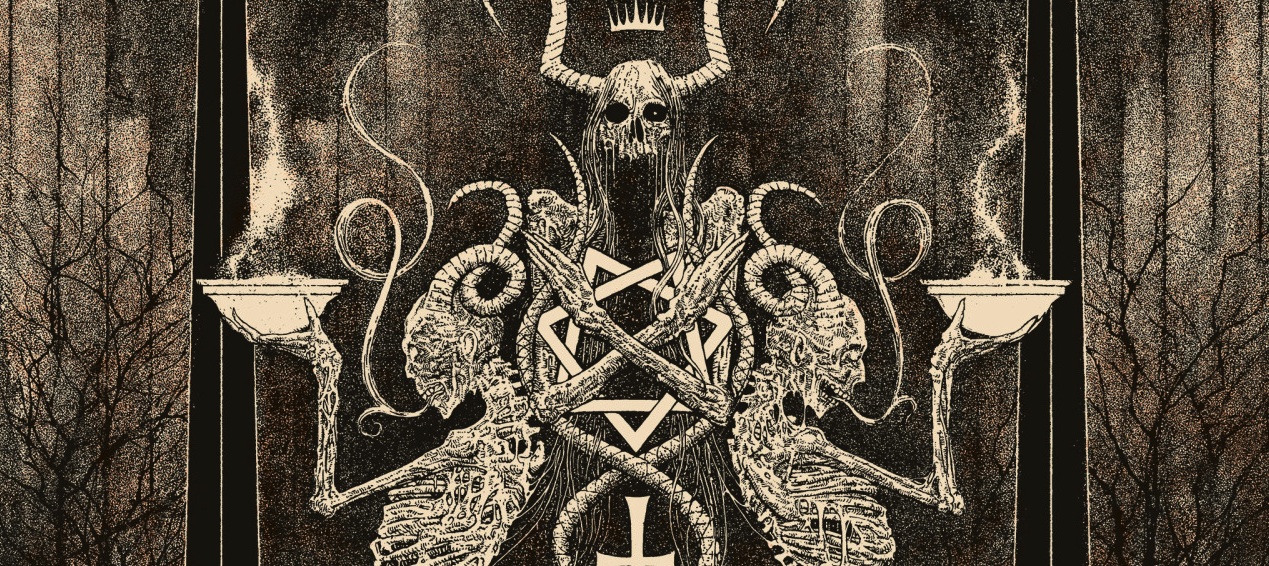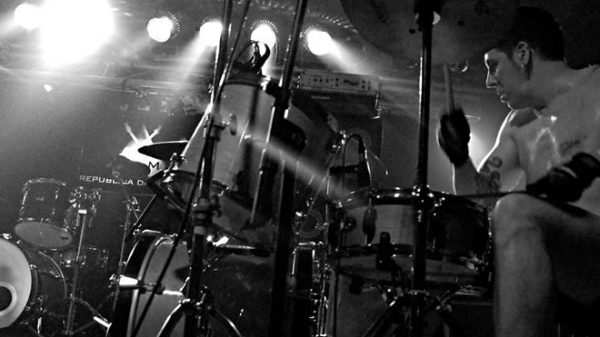Brian Uhl (@gentlemercies) interviews Glyn Smyth (@glynsmyth)
Brian Uhl: You’ve mentioned being influenced by the likes of Jean Delville and Franz Von Stuck, both of whom exhibit elements of Romanticism which I also see glowing through your own art at times. A lot of figures in this style have the contrasting appearance of an innocent inviting gaze while also exhibiting a tight-lipped tension, like a secret is on the tip of their tongue… “follow me if you dare.” I guess this is more of a personal observation on aesthetics of mystery than it is a question, but does that resound with you at all?
Glyn Smyth: Absolutely. There’s an aesthetic prevalent from the early 1800’s through to the 1900’s which I find evocative, if not downright intoxicating. From Romanticism to the Pre-Raphaelites and subsequent ‘Jugendstil’ movements….The Symbolists. “Decadent” art. German Expressionism. The “tight-lipped tension” you mention is definitely a good term for the atmosphere a lot of this art conveys. You aptly mention Jean Delville and Franz Von Stuck. Gustav Klimt and Fernand Khnopff are another couple who consistently nail this atmosphere also…this portrayal of dreamlike, liminal states. There’s an ambiguity about a lot of this work. For the most part it poses questions rather than offers answers. It’s the mystery that endures. The figures are archetypal for the most part, rather than actual individuals I guess. They tend to represent ideas more than they do actual individuals.
(interviewer’s note: The artists listed above were primarily active from the mid 1800’s to late 1920’s. Together they painted in the Symbolist style, which was founded on the idea that profound messages in art could only properly be communicated through a suggestive manner meant to resonate on a primordial level.)
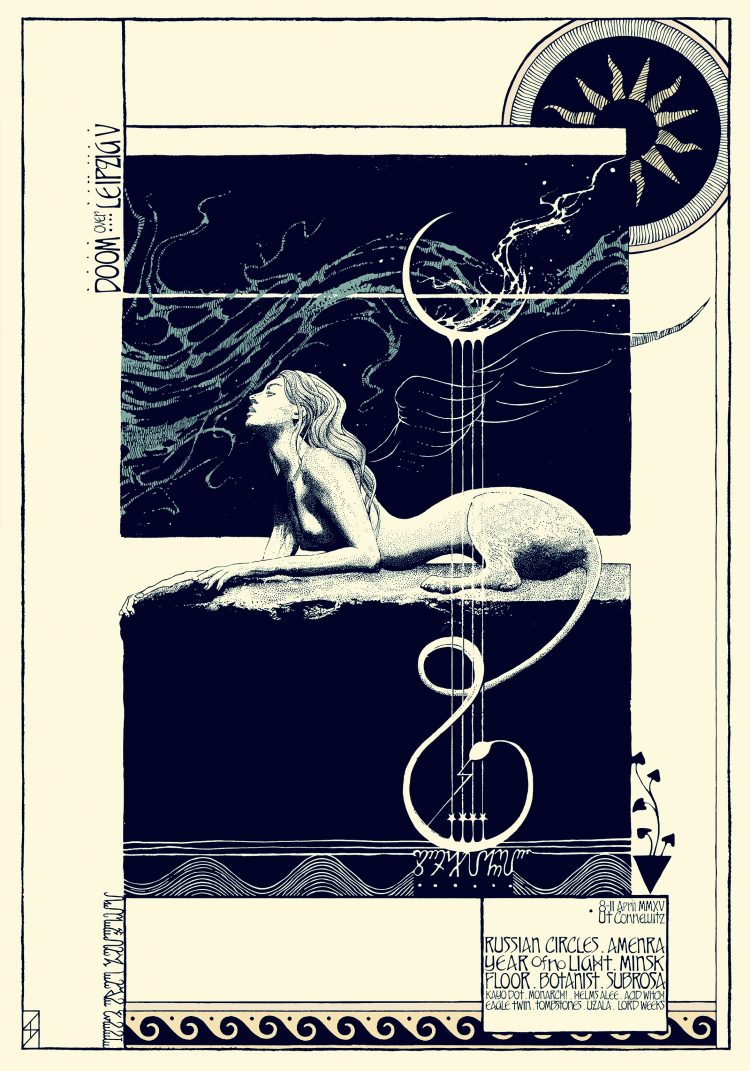
BU: You stated in an interview with New Noise Magazine that you would call yourself a Fortean. I live in a house that I personally believe is haunted though some of my housemates beg to differ, even if only ostensibly. Do you think to experience these things there requires a predisposition for belief in the supernatural, or maybe a childhood trigger..? What first tipped you off to the other side of things? (interviewer’s note: Charles Fort was a late 1800’s writer focused on the fields of scientifically unexplainable phenomena)
GS: Well the label “Fortean” seems most apt I think. It hints at my keen interest in “fringe” topics such as folklore, alternative history and the “supernatural” without having to align myself with any one camp of belief. A famous Charles Fort quote sums it up for me : “I conceive of nothing, in religion, science or philosophy, that is more than the proper thing to wear, for a while.”. Whilst some might see it as sitting on the fence ideologically, I see it as adopting a proper sense of humility in the face of a vast and perhaps incomprehensible universe. The more you know, the less you know! I’ve no idea whether belief is a pre-requisite for “paranormal” experience – though I definitely think it plays a part in the perception of the experience for the individual. For me personally there is a handful of anomalous experiences – the majority of which stem from my childhood and teenage years – that are of a very distinct nature and that have certainly fueled my interest in these topics. But I think ‘reality’ is a lot more malleable than the new atheists and materialists argue. I subscribe to the idea that we can inadvertently “summon” external forces, or at least are in some way responsible for manifesting them. Perhaps rather than us merely being adrift in a cold and meaningless void, it is our role to impose meaning on it? On a more paranoid level, I don’t discount the idea we’re in some kind of simulation…a walled garden of sorts…perhaps mere property or livestock (again a famous musing of Charles Fort).
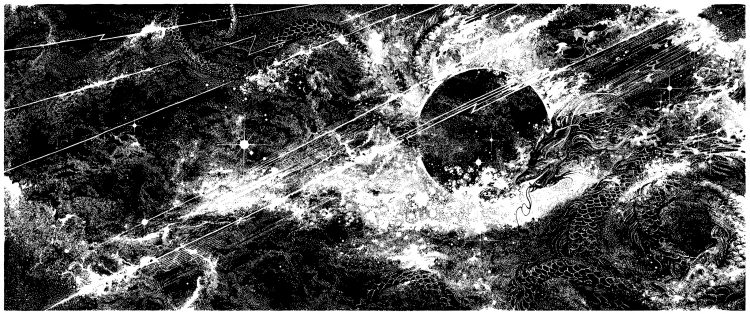
BU: I read that you drifted away from art in your late teens.. what brought you back to it?
GS: Although a keen drawer throughout my childhood, in my late teens I found I was constantly underwhelmed with my own artistic efforts and grew disillusioned. I was keen to emulate what I saw in comics, fantasy art and record covers though my own efforts fell well short of the standard I aspired to. I mistakenly came to believe that you needed to be exceptionally gifted rather than put in the necessary time and practice to improve…immaturity essentially. But I did channel creative energy into other pursuits and through involvement with the HC/punk scene I finally started dabbling with graphic design and illustration again until it ended up being my main focus. I’ve come to realise what you get out of it is in direct correlation to the energy you put into it (for the most part!)
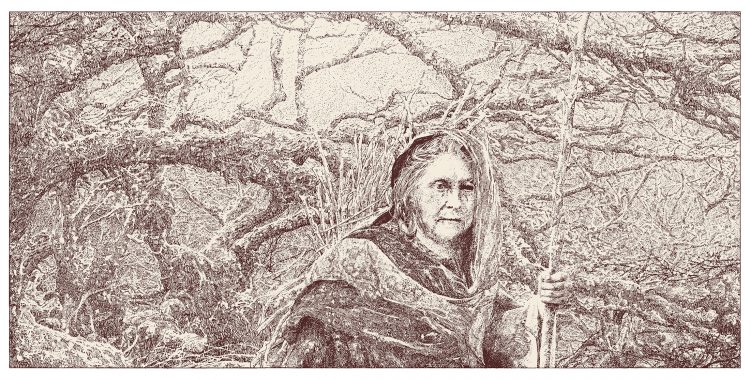
BU: You cite magick as an inspiration, Do you incorporate any types of magick into your day to day life…? Charming objects, creative ritual, etc..?
GS: My views on Magick constantly evolve and mutate, but I basically agree with Alan Moore’s famous assertion that any form of art is essentially an act of Magick. Of course, the potency and value of the work varies depending on the amount of intent invested and the skill of the artist or practitioner. I have a strong interest in “the art” regardless of tradition or creed. As a rule, I have more interest and feel more affinity with the archaic folk practices of “cunning folk” and various shamanic traditions than the ceremonial magick typified by The Golden Dawn for example. But however it’s dressed up I essentially view Magick as a kind of “consciousness technology”. It certainly comes into play in my life and work, but mostly in an instinctive fashion. For me, it’s more a way of looking at things and drawing connections and seeing symbolism in the world around you. I think most artists have a fundamentally “magickal” worldview…they are essentially creating or summoning into existence something that otherwise remains hidden.
BU: How well are you at trusting your instincts? Does stream-of-consciousness play into your creative processes? I feel that the more instinctually in-tune one is, the more open their mind is to incoming entities/energies, kind of a riff on Fort’s synchronicity.
GS: I think every artist can relate to that feeling when it seems like the work is coming from somewhere else…like you’re simply the conduit. It’s usually these times that the work is most successful…and it’s definitely preferable to the times when I’m tearing my hair out to try and get something to work out before giving up and going back to the drawing board (literally). There’s a great part in David Lynch’s book “Catching The Big Fish” where he basically says you need to listen to the idea itself and let it tell you what you need to do in order to finish the work. I find this very true in practice. When I’ve had work that’s been a struggle it’s usually because I’ve focused too intently on practical matters such as rendering or composition and have essentially forgotten to listen to the idea. For me, the appearance of synchronicities usually indicate I’m on the right track. It’s remaining receptive to these and remembering to follow the paths they present is the challenge. It’s usually easier to do this with personal work than it is with illustration when there’s often a certain amount of client art direction to consider.
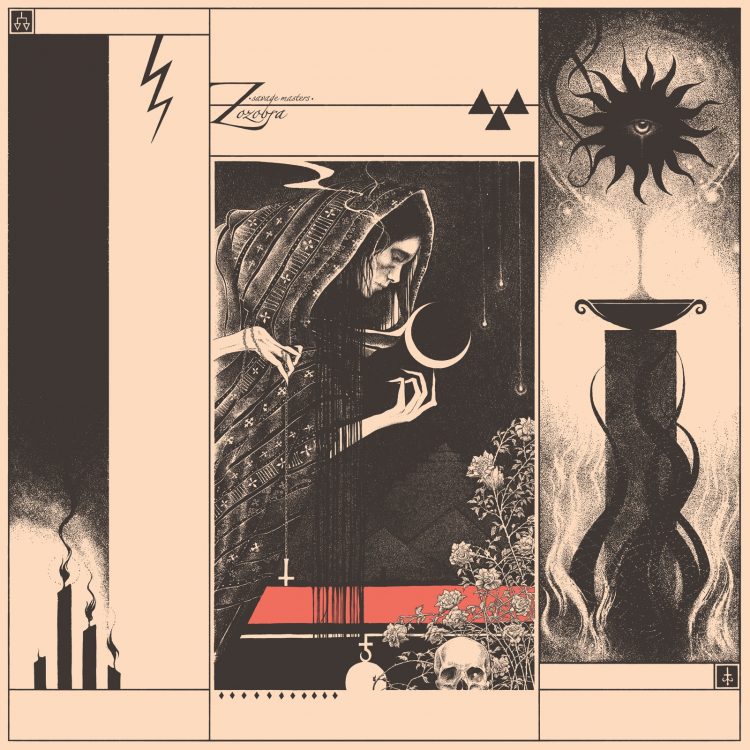
BU: Your record cover for Boston sludge band Zozobra (and a lot of your other works) have a compositional feel of cut-and paste and Xerox/zine art. Patchwork compositions, if you will. Does collage or assemblage take place in your creative process?
GS: I’m definitely an enthusiast of the “cut and paste” approach, which I was bombarded with in my early years through HC/punk culture. The confrontational collage work of Gee Vaucher for the band Crass would definitely be a marked early inspiration, and this led to me discovering the work of earlier pioneers such as John Heartfield and others. The “Savage Masters” cover for Zozobra wasn’t actually executed in this fashion but rather was inspired by the work of 19th century book designer Charles Ricketts (with distinct nods to Aubrey Beardsley, John Austen et al.) The “panelled” approach in this instance is definitely more an exercise in Art Nouveau and 19th century inspired design, but also encompasses certain magickal motifs; the central panel is “the gateway”, the side panels represent the “twin pillars” of Mercy & Severity. (A similar thinking is evident on my Profound Lore poster from 2011 and some recent album art for Fyrnask). However I do often use a “cut and paste” approach early on when working out a composition. Working digitally, I sometimes will quickly sketch up elements and then move it around my prospective canvas to get a feel for the composition. Other times I’ll have a very distinct idea in my head and I just have to hammer it out till I get close to it. It varies…but I do like this approach whether it’s used merely at the outset to get things rolling for a more traditional approach or is an actual aesthetic hallmark of the final design.
BU: Are you into recording your dreams upon waking? Do your dreams play into your inspiration?
GS: I used to have extremely vivid and frequently nightmarish dreams when I was younger, though these days it’s rare I experience interesting or vivid dream states. To be honest, I’m a very light sleeper – it’s rare I sleep uninterrupted for a long enough period to experience vivid dream states these days. Though I do draw inspiration from past dreams and altered states such as sleep paralysis which I have experienced in the past.
BU: I was really excited to read that you do all your printing in a local communal print-space.. If its not solely based in being frugal, can you speak a bit on what its like to be around others while you’re creating? Does it stoke inspiration more than if you were working in a private studio?
GS: I have always printed in communal workshops. I work from a home studio 99% of the time and when I do get the chance to print it’s nice to have the change in environment. I think it’s important to be around other artists and printmakers in regards to learning new techniques and sharing information. The creative part of my work tends to be done at home. Printing in a communal space for me is more about changing gear, moving around and getting the edition done. When I say this, I’m thinking more about screen-printing (where I have the whole design worked out beforehand) but there’s other processes like etching and lithography which I’m keen to pursue more fully which would probably see me doing more of the creative work on directly on the plate itself in a workshop environment.
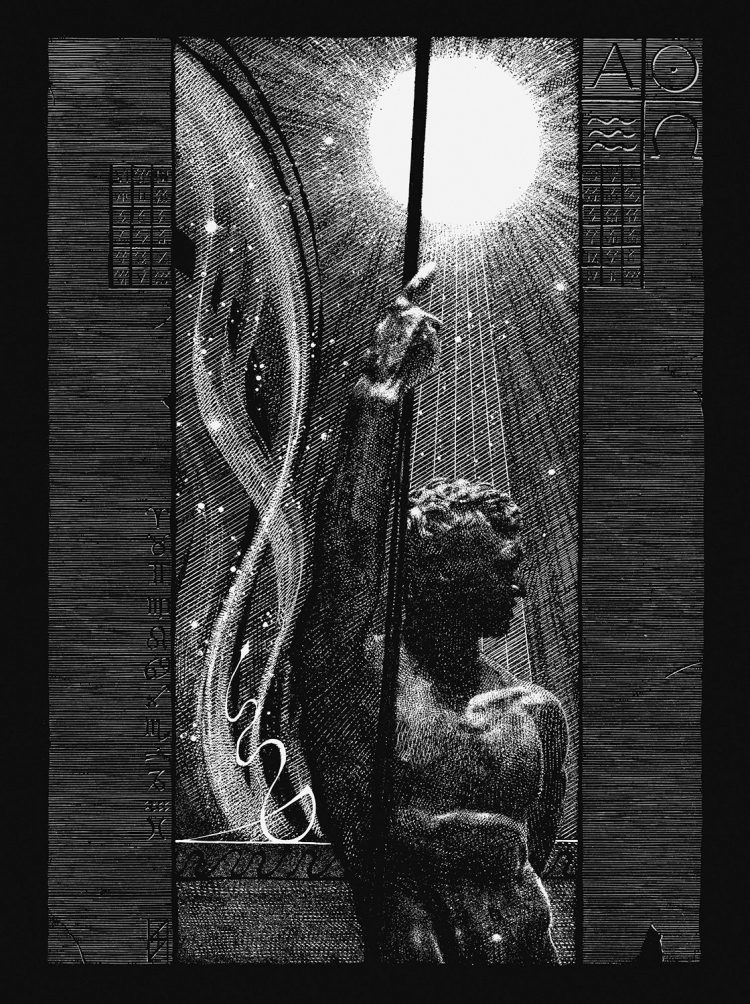
BU: Care to list a few books, ideas or music that changed your life?
GS: It’s really hard to narrow this down, but the British comic 2000AD is perhaps the earliest influence which bears direct relation to what I do now. I vividly remember getting the first issue at the age of 5 and continued to collect this for many years – it undoubtedly was the gateway drug in many respects. Later on in life, I found The Sandman comic very influential, not least in terms of how it reinterpreted myth for a new audience. Discovering Austin Spare and exposure to the Crowley “Thoth” tarot are important. Musically, I would consider Black Flag, Rudimentary Peni and Neurosis as key bands along the way. This last week I’ve been listening a lot to Ugasanie “Eye Of Tunguska” and reading “Star Ships” by Gordon White and “The Messengers” by Mike Clelland – all of which I heartily recommend 😉






